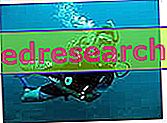What is turkey
General information on turkey
The turkey is a large bird of Central North American origin, currently bred almost all over the world.

Close relatives of the pheasant, are considered turkeys properly so called only two species included in the genus Meleagris ( gallopavo - the commonly bred - and ocellata ).
The turkey mainly consumes the meat, while the eggs and the fifth quarter (offal like liver and heart, but also neck and legs) have a decidedly lower commercial importance. Not everyone knows that the turkey, originally wild, in the wild has darker meats, such as those of game (black meat). Instead, bred, it becomes very clear and takes on all the characteristics of captive poultry.
That of the farmed turkey is a white meat that is part of the first fundamental group of foods, as a nutritional source of high biological value proteins, specific vitamins and minerals. It is suitable for most diets, including the low-calorie diet, nutritional therapy against certain metabolic pathologies, etc.
Did you know that ...
In the USA, due to the very high demand for whole turkeys, turkey eggs have become a food that is difficult to find and very expensive. A single turkey egg costs on average $ 3.5, which is more than a whole package of chicken eggs.
In the kitchen, turkey meat is ideal for many different preparations; typically used as a dish, it is also a very popular ingredient for appetizer and pasta dishes.
Turkey Nutritional Properties
Introduction to turkey meat
The various cuts of turkey do not have the same nutritional characteristics. They are generally considered to be quite thin and light products, but they can change considerably depending on the presence of the skin and depending on the piece (chest, thigh, wing, etc.).
The skinned turkey breast is undoubtedly the leanest part, while the thigh with the thickest skin. Even the concentration of minerals and vitamins can change depending on the cut, but not as decisively.
Below we will examine turkey breast meat, as it represents the most widespread cut, appreciated and marketed in almost all Western countries.
Turkey breast: nutritional characteristics
Rich in essential amino acids, specific vitamins and minerals, turkey meat belongs to the 1st fundamental food group.
Almost entirely made up of proteins, turkey provides reduced amounts of lipids and is free of carbohydrates. As anticipated, peptides are of high biological value; the fatty acids of the skinned animal are equally distributed between saturated, monounsaturated and polyunsaturated.
The turkey provides medium amounts of cholesterol; it is instead free of fibers and other prebiotics. The molecules most commonly responsible for food intolerance are also absent: gluten, lactose and histamine (if fresh, not processed and well preserved).
As far as vitamins are concerned, the turkey has excellent concentrations of water-soluble B group and above all of niacin (vit PP); there is no lack of thiamine and riboflavin (vit B1 and vit B2). The levels of fat-soluble vitamins are irrelevant.
Regarding the specific mineral salts of the first fundamental group of foods, turkey can be considered a good source of highly bioavailable iron, selenium zinc; considerable doses of potassium and phosphorus are not lacking.
The turkey lends itself to any diet, except for those with food allergies. It is ideal, like chicken and rabbit meat, in the low-calorie slimming diet due to its low energy content and fatty acids. Excellent protein source, it is used very much in the sportsman's diet (both strength and endurance, with anabolic or anti-catabolic muscle aim), of the child and the elderly; it should be noted that, for the same reason, large portions of turkey must be avoided in kidney failure. The low content of saturated fatty acids and cholesterol make it one of the few choices among foods of animal origin in nutritional therapy against hypercholesterolemia. Poultry muscle tissues are on average rich in purines; in the diet against hyperuricemia and gout, even the turkey must be eaten sparingly.
Turkey does not lend itself to vegetarian and vegan food, let alone raw food. It is also totally excluded from Buddhist philosophy and Hindu religion. On the contrary, according to Judaism, the turkey is a kosher food and according to the Muslim religion is a halal product (in both cases, lawful).
The average portion of turkey breast is 100-120 g (about 110-130 kcal).

Turkey, breast, meat only, raw | ||
Nutritional values per 100 g | Quantity' | % * |
| Power | 111.0 kcal | - |
Total carbohydrates | 0.0 g | - |
Starch | 0.0 g | - |
| Simple sugars | 0.0 g | - |
| fibers | 0.0 g | - |
| Grassi | 0.7 g | - |
| Saturated | - g | - |
| Monounsaturated | - g | - |
| polyunsaturated | - g | - |
| Protein | 24.6 g | - |
| water | - g | - |
| Vitamins | ||
| Vitamin A equivalent | -μg | - |
| Beta-Carotene | -μg | - |
| Lutein Zexanthin | -μg | - |
| Vitamin A | -iu | - |
| Thiamine or vit B1 | 0.0 mg | 0% |
| Riboflavin or vit B2 | 0.1 mg | 8% |
| Niacin or vit PP or vit B3 | 6.6 mg | 44% |
| Pantothenic acid or vit B5 | 0.7 mg | 14% |
| Pyridoxine or vit B6 | 0.6 mg | 46% |
| folate | 8, 0μg | 2% |
| Choline | 0.0 mg | - |
| C vitamin | 0.0 mg | 0% |
| Vitamin D | -Âμg | 0% |
| Minerals | ||
| Football | 10.0 mg | 1% |
| Iron | 1.2 mg | 9% |
Magnesium | 28.0 mg | 8% |
| Manganese | - mg | - |
| Phosphorus | 206.0 mg | 29% |
| Potassium | 293.0 mg | 6% |
| Sodium | 49.0 mg | 3% |
| Zinc | 1.2 mg | 13% |
| fluoride | -μg | 0% |
* The percentages (approximate) refer to the recommended US ration (US) for the adult population
Turkey tail: very fatty food
After the Second World War, for the very low cost, in the whole area of Samoa the cutting of the fifth fourth "turkey tail" became very popular. Due to its typical fatness, this food was largely responsible for the increase in obesity in these Pacific Ocean populations. To counter this epidemic phenomenon, from 2007 to 2013 the turkey tails were totally banned from the local market. Today, to satisfy the requests of the "World Trade Organization", they have been reintroduced to the local market.
Turkey and sleepiness
In America there is a belief that large portions of turkey can cause severe sleepiness. To justify the phenomenon would be the high percentage of amino acid tryptophan, known precursor of serotonin and melatonin. This is obviously a buffalo, since turkey is certainly not the only food rich in this nutrient. Instead it is logical to deduce that, being a product of tradition, it is always the protagonist of large meals on holidays. Theoretically in an atmosphere of deep relaxation, turkey meat is always accompanied by foods rich in carbohydrates and fats, which hinder digestion, and also by generous portions of alcoholic beverages (instead closely related to drowsiness).
Kitchen
Turkey in Italian cuisine
In Italian cuisine, the turkey is mainly used to prepare steaks, kebabs or paillard roasted on the grill or on the griddle. Note the turkey steaks in the pan. Boneless roast turkey is very popular, rolled and baked, even stuffed; a particular recipe involves a subsequent marinating in seed oil, parsley, lemon, garlic and pepper of the already cold slices of roast. Any cut of turkey, including large thighs, can be used in stewing in a pan (stew) or in cooking in a stewed oven (braised). The cubes of turkey pulp can be sautéed in a pan (floured or natural), including nuances of white wine. Excellent fried turkey meat. Not everyone likes boiled; some apply vasocottura with dill or other aromas, or low-temperature vacuum cooking.
Use of turkey in the Anglo-American kitchen
In the United States, turkey is a traditional food and has a great importance in culturally significant events such as Thanksgiving and Christmas.
The turkey is sold fresh or frozen, whole (plucked, decapitated, deprived of legs and eviscerated), in pieces (breast, thigh, wing or quarter) and sliced (chest breast).
Did you know that ...
By adopting a proper thawing technique (in the refrigerator), a medium frozen turkey takes several days to completely regenerate.
The derivatives of turkey meat, such as minced meat, hamburgers, sausages, frankfurters, bacon and roast (also smoked, to be sliced as a salami) are also very popular. Note : all turkey-based preserved meats, even those mixed with other fats, are normally considered more healthy than pork.
The whole turkey is usually cooked roasted in the oven. The process requires several hours and an adequate temperature; during this phase, the cook prepares the rest of the meal and, if the recipe requires it, glaze or brush the food periodically with the cooking sauce. Before roasting in the oven, the turkey is subjected to marinating in stew; this phase is useful both for attributing specific aromatic and taste characteristics, and for increasing the hydration of lighter and leaner tissues (eg the chest) which otherwise would tend to dry out before the food is cooked completely.
In some areas of the United States the recipe for fried turkey is very popular, in which the animal is immersed (with special fryers) in peanut oil at the right temperature (between 150-180 ° C) for a time of about 35-45 '.
For Thanksgiving, in the United States and Canada, the turkey is generally prepared stuffed (the filling can also be cooked separately) and enriched with cranberry sauce. The most popular side dishes for thanksgiving turkey are mashed potatoes, corn on the cob (ears of corn), green beans, squash and sweet potatoes. Traditional meals such as pumpkin, apple or pecan walnuts end the meal.
Did you know that ...
The turkey filling can be of various types; some very used ingredients are: oatmeal, chestnuts, sage and onion, or corn bread and sausage.
In the United Kingdom, at Christmas, turkey is traditionally served with typically winter vegetables; for example, roast potatoes, Brussels sprouts and parsnips. In the northern rural areas of the United Kingdom the traditional sauce is based on wild cranberries. In the south and in urban areas instead, where until recently blueberries were difficult to find, in their place bread sauce was often used.
Wild turkey
Wild turkeys, of the same species as domestic ones, have a very different taste. The meat is darker (similar to game - black meat) and has a very intense flavor. The organoleptic and gustatory characteristics of the wild turkey can vary seasonally with the change of diet in the natural habitat.
Did you know that ...
In America, wild turkeys hunted in late summer have a characteristic taste, thanks to the diet particularly rich in insects of the previous months.
Biology
Outline of turkey biology
The turkey is an animal belonging to the Order Galliformes, Family Phasianidae, Subfamily Meleagrinidae and Genus Meleagris . The turkey species proper are:
- M. gallopavo : turkey from North America
- M. ocellata : turkey from Central America.
The turkey lives above all in the woods. It is not a good bird and it moves mainly on the ground where it usually scratches to feed. Male and female have different colors. It feeds on various vegetables, grains, nuts, berries, fruits and insects (even locusts).



